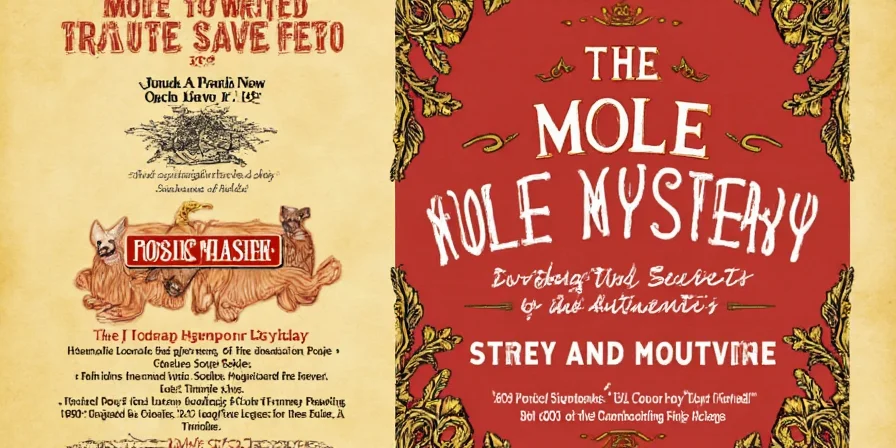Authentic mole recipe anyone can make! Get this easy step-by-step guide with simple ingredients you likely have at home. This traditional Mexican sauce transforms ordinary meals into extraordinary experiences—with no specialty equipment needed. Follow our tested method for rich, balanced mole every time.
Prep time: 20 minutes | Cook time: 45 minutes | Servings: 4-6 | Difficulty: Beginner-friendly
Authentic Mole Poblano Recipe (Simplified for Home Cooks)
Ingredients You'll Need
- 3 ancho chiles (stemmed/seeded)
- 2 pasilla chiles
- 1/4 cup almonds or walnuts (toasted)
- 1 corn tortilla (charred)
- 2 roma tomatoes
- 1/4 cup raisins
- 1 cinnamon stick
- 1/2 oz unsweetened chocolate
- 2 cups chicken or vegetable broth
- 1 small onion, divided
- 1 clove garlic
- Salt to taste
Step-by-Step Instructions
- Dry-toast chiles: Heat skillet over medium. Toast chiles 90 seconds per side until fragrant (don't blacken). Place in bowl, cover with hot water, and soak 25 minutes.
- Prepare base: In same skillet, toast tortilla until blackened at edges. Toast nuts until golden. Roast tomatoes, onion half, and garlic until softened.
- Blend ingredients: Drain chiles (reserve 1/2 cup soaking liquid). Blend soaked chiles, toasted tortilla, nuts, roasted vegetables, raisins, cinnamon, and 1/2 cup soaking liquid until smooth.
- Cook sauce: Simmer broth with remaining onion half 10 minutes. Add blended mixture and cook 20 minutes. Stir in chocolate during last 5 minutes.
- Final touch: Remove onion, season with salt. Simmer uncovered 10 minutes to thicken. Strain for silky texture (optional).

5 Regional Mole Variations Made Simple
| Region | Key Difference | Ingredient Swap | Quick Tip |
|---|---|---|---|
| Oaxaca | Smoky depth | Add 1 blackened tortilla | Toast until edges turn black |
| Puebla | Complex layers | Toast chiles, nuts, spices separately | Use separate pans for each |
| Tlaxcala | Bright acidity | Replace tomatoes with tomatillos | Add lime juice if using tomatoes |
| Michoacán | Herb-forward | Add epazote or cilantro stems | Stir in during last 5 minutes |

Troubleshooting Your Mole: Quick Fixes
| Problem | Quick Solution | Prevention Tip |
|---|---|---|
| Bitter taste | Add 1 tsp vinegar or lime juice | Don't blacken chiles when toasting |
| Sauce separates | Blend in 1 tbsp masa harina | Include at least 1/4 cup nuts/seeds |
| Too spicy | Stir in avocado or extra broth | Remove all chile seeds completely |
| Flavor too flat | Add toasted sesame seeds | Toast spices 2 minutes before blending |
| Too thin | Simmer uncovered 15 minutes | Use less soaking liquid when blending |
Why This Recipe Works: The Simple Science
Mole's magic comes from layered toasting techniques—not hard-to-find ingredients. When you toast chiles, nuts, and spices, chemical reactions create complex flavors. The key is maintaining 325°F (163°C)—hot enough for flavor development but not so hot that ingredients burn.
For best results, let your mole rest overnight. The flavors continue to develop as acids in tomatoes break down complex compounds, mellowing bitterness while enhancing savory notes. This is why restaurant mole often tastes better the next day!

Frequently Asked Questions
Can I make mole without chocolate?
Yes! Only two mole varieties (poblano and negro) traditionally include chocolate. For other regional styles like verde or amarillo, simply omit chocolate and increase nuts or seeds for richness.
How do I store leftover mole?
Cool completely, then refrigerate in airtight container for up to 1 week or freeze for 3 months. Reheat gently on stove—never boil, as this breaks the emulsion.
What's the secret to restaurant-quality mole at home?
Toasting ingredients separately makes the biggest difference. Give each component (chiles, nuts, spices) its own time in the skillet—this builds layered complexity rather than one-dimensional flavor.
Can I use dried fruit instead of raisins?
Absolutely. Dried apricots, prunes, or cherries all work well. Just soak them with the chiles to soften. They'll add different flavor notes while still balancing bitterness.
Enjoy Your Authentic Mole Experience
Making authentic mole doesn't require special skills or equipment—just attention to simple techniques. By focusing on proper toasting, balanced ingredients, and allowing time for flavors to develop, you'll create a sauce that honors tradition while fitting your home kitchen. Serve over chicken, turkey, or enchiladas for an impressive meal that's simpler than you thought possible!












 浙公网安备
33010002000092号
浙公网安备
33010002000092号 浙B2-20120091-4
浙B2-20120091-4